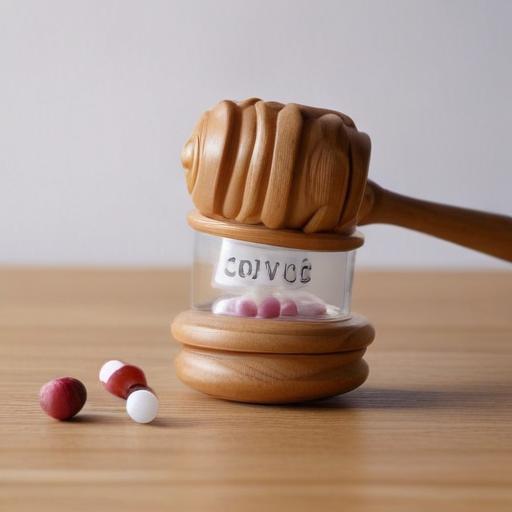AAP’s pediatric COVID-19 vaccine guidance draws sharp comment as Kennedy questions liability
The American Academy of Pediatrics (AAP) released updated pediatric COVID-19 vaccine recommendations this week, signaling strong support for vaccinating children from 6 months to under 2 years and indicating that vaccines should be offered to older children if parents choose to proceed. The guidance contrasts with the CDC’s position, which does not specifically recommend the vaccines for children but allows vaccination when parents and providers agree.
In response, HHS Secretary Robert F. Kennedy Jr. posted on X that AAP recommendations diverging from the CDC’s official list should not shield physicians or hospitals from potential liability under the 1986 Vaccine Injury Act. He described the AAP’s stance as “corporate-friendly” and urged disclosure of conflicts of interest and corporate entanglements in both the organization and its journal, suggesting the guidance may reflect commercial interests as much as public health.
Legal and policy experts say Kennedy’s liability claim is misleading. They explain that liability protections under the Vaccine Injury Compensation Program (VICP) operate independently of whether a vaccine is recommended by a professional body. If a vaccine is covered by VICP, manufacturers and vaccinators are protected; if not, those protections do not automatically disappear because a professional association issued different guidance. COVID-19 vaccines, for example, are not currently covered by VICP because Congress has not created an excise tax for these vaccines that would bring them under the program. Consequently, the fact that the AAP recommended vaccines for certain age groups does not, on its own, alter VICP coverage.
Experts also note that the discrepancy between AAP and CDC recommendations could signal potential shifts in how vaccines are treated under future policies. If Congress or regulators alter the scope of VICP protections for vaccines currently outside the program, it could change the landscape for compensation, the vaccine market, and how adverse events are addressed. Nevertheless, they emphasize that the current guidance and safety frameworks still rely on established science and compensation mechanisms that existed prior to Kennedy’s tenure.
Amid the debate, the AAP defended its position, stating that its immunization guidance rests on decades of peer-reviewed science and that it maintains transparent disclosures about funding and conflicts of interest. The organization invited Kennedy to discuss the recommendations to restore its role in shaping pediatric immunization policy. The AAP’s stance comes as Kennedy has undertaken broader changes to vaccine policymaking at the CDC, including the removal of the entire Advisory Committee on Immunization Practices (ACIP) and the installation of a new slate of members, some with publicly known vaccine-skeptic positions and potential conflicts of interest. Healthcare groups have also been barred from ACIP work groups in recent months, further shaping the advisory landscape.
What this means going forward
– The disagreement highlights ongoing tensions between independent medical organizations and federal health agencies over how vaccines are recommended and communicated to the public.
– The status of VICP and any potential changes to which vaccines are covered remains a critical factor for manufacturers, healthcare providers, and families, with Congress’ actions likely to shape the compensation framework in the years ahead.
– AAP and other medical associations are calling for transparent practices and continued collaboration with policymakers to ensure that pediatric immunization guidance remains grounded in science while preserving pathways for compensation and accountability.
Summary
The AAP’s fresh pediatric COVID-19 vaccine recommendations, supporting vaccination for the youngest children and allowing parental choice for older kids, have sparked a dispute with Kennedy over liability and conflicts of interest. Legal experts say liability protections tied to VICP do not hinge on professional endorsements, and COVID vaccines are not in VICP because of legislative gaps, not AAP action. The episode underscores broader questions about how vaccine guidance, compensation programs, and advisory leadership intersect in U.S. public health policy, with the potential for future shifts depending on legislative and regulatory developments. AAP maintains its stance as scientifically grounded and invites dialogue to restore its seat at the policy table, offering a hopeful path toward collaborative decision-making that prioritizes child health.
Additional comments to add value
– When publishing, consider including a brief explainer of VICP and how vaccine liability protections work, since readers may encounter related claims in public discussions.
– If possible, provide balanced quotes from CDC and comparable pediatric groups to help readers understand the spectrum of expert opinion.
– Track any developments on ACIP membership and federal rulemaking, as these could signal strategic policy changes that affect how immunization recommendations are formed and communicated.
Positive note
Despite the controversy, the core objective remains protecting children’s health through evidence-based immunization practices and robust safety nets. Ongoing dialogue between medical groups and policymakers can help ensure recommendations are both scientifically sound and practically implementable for families and providers.
